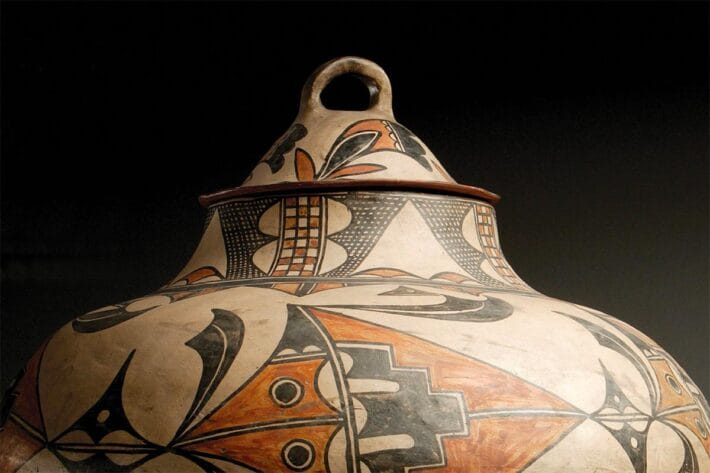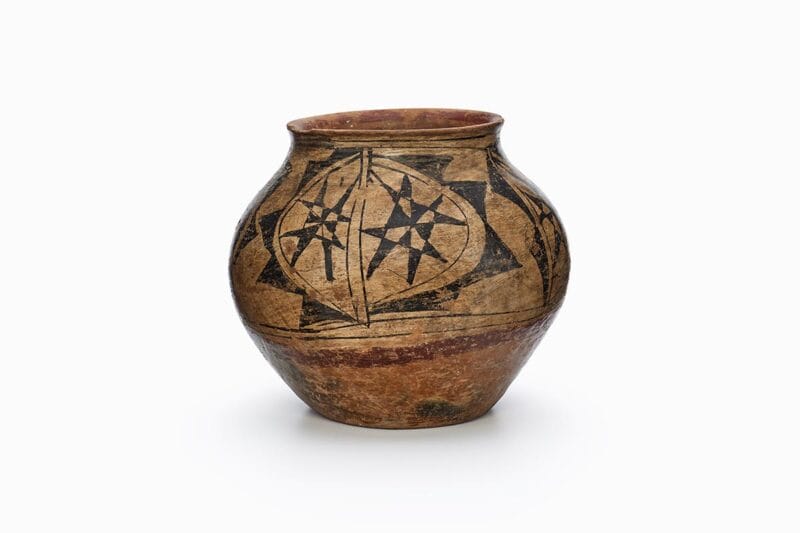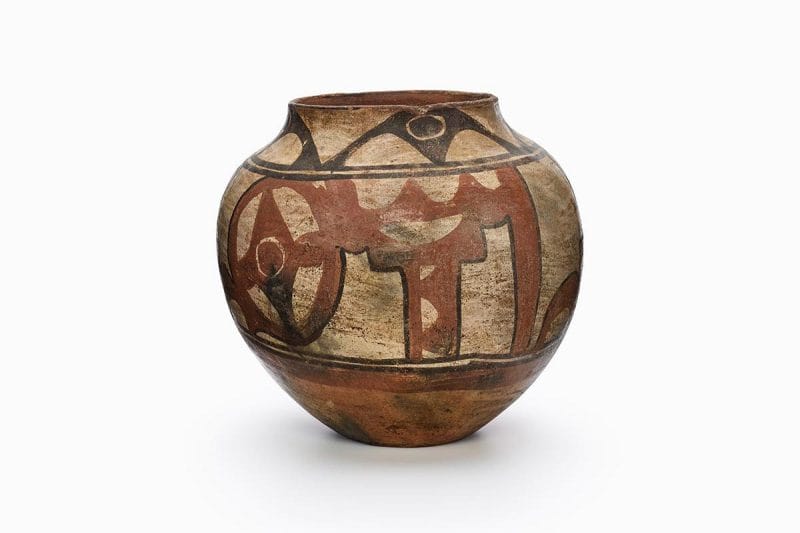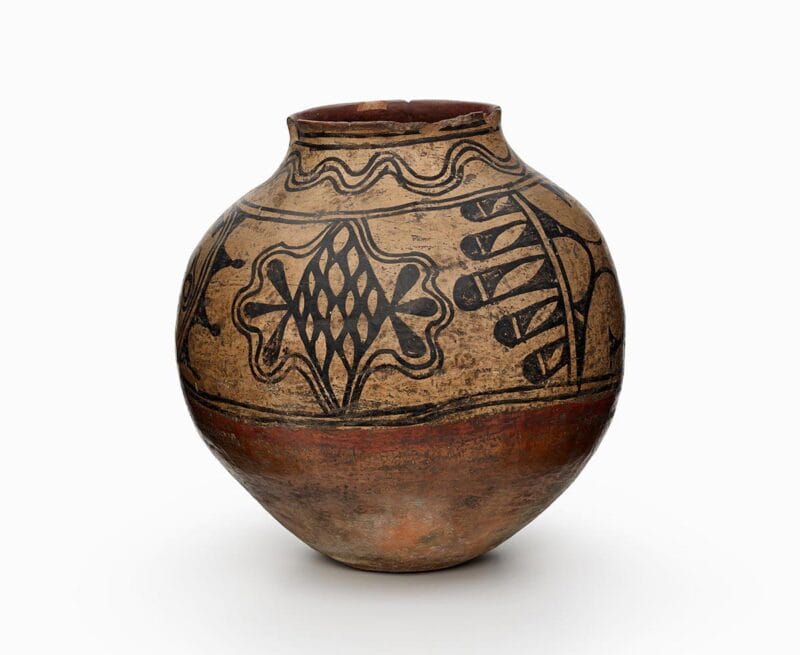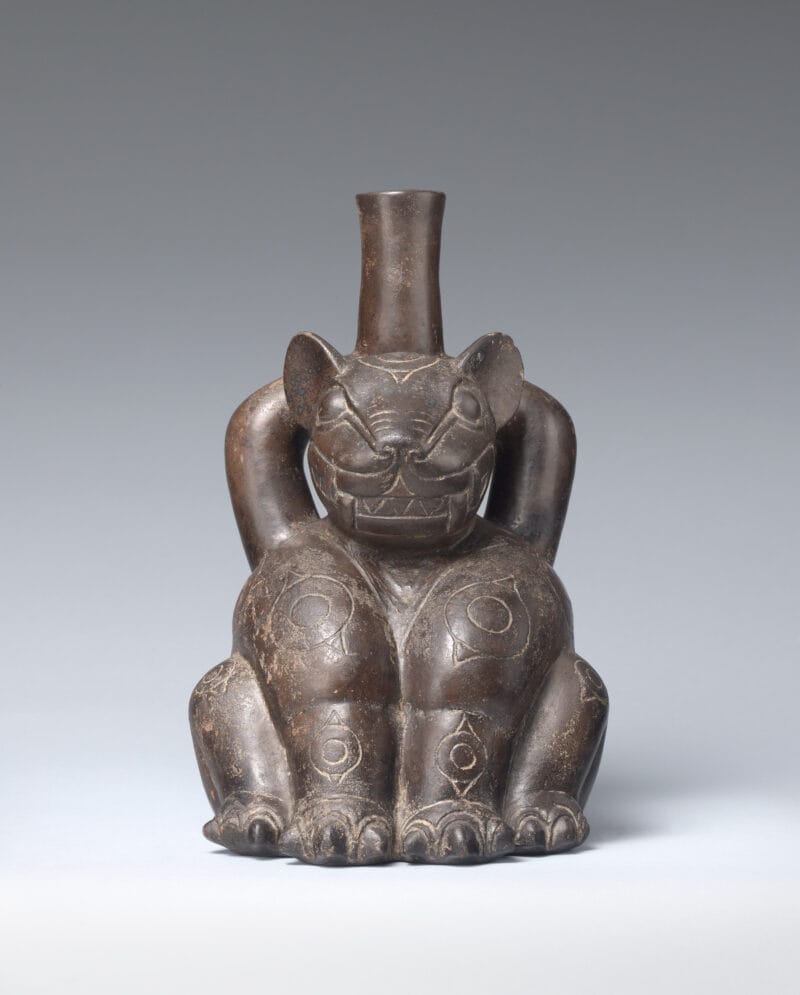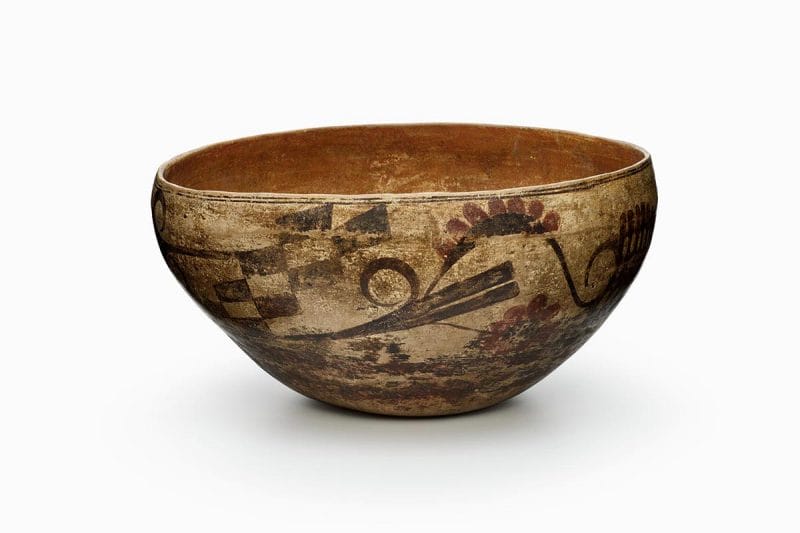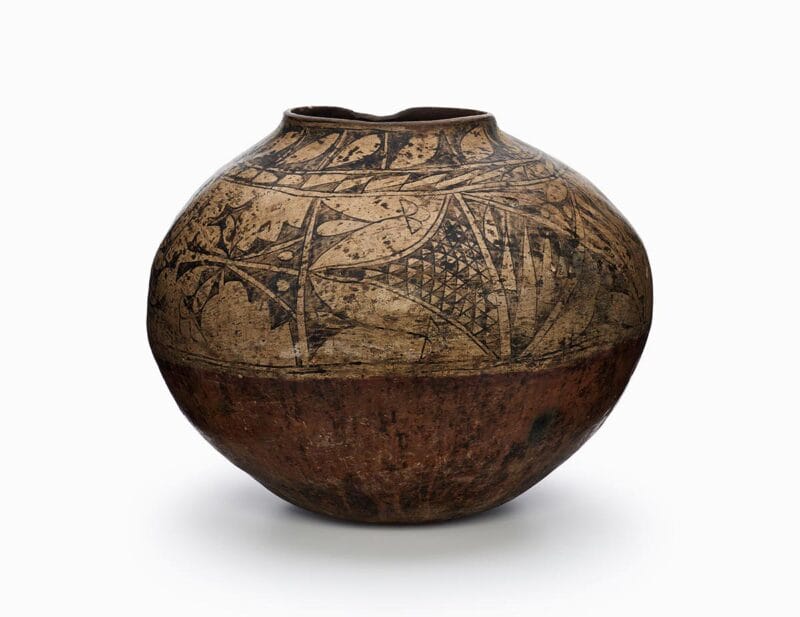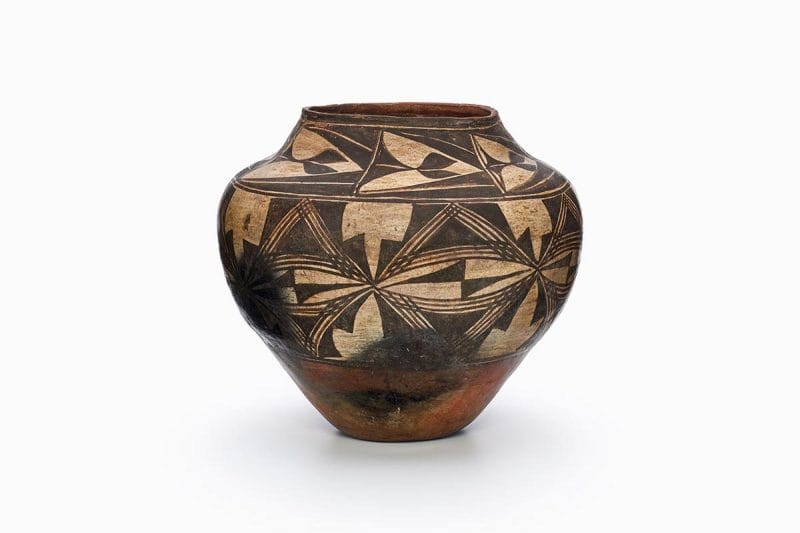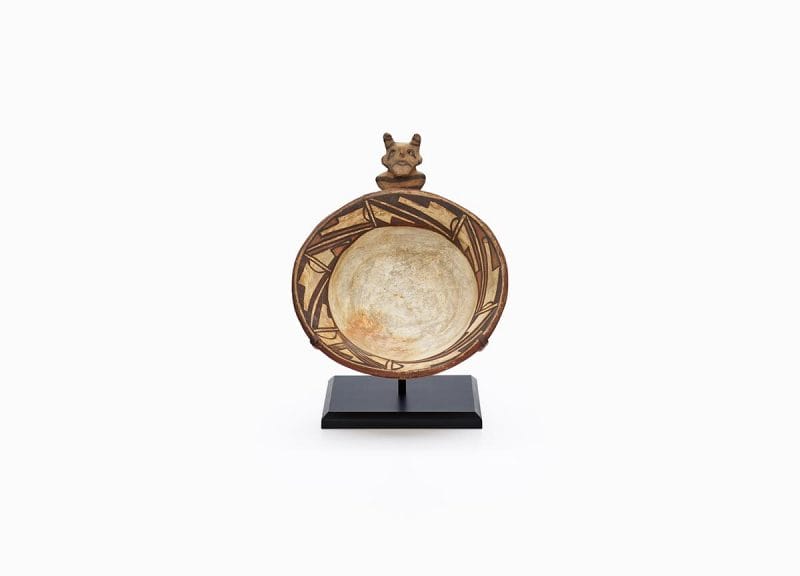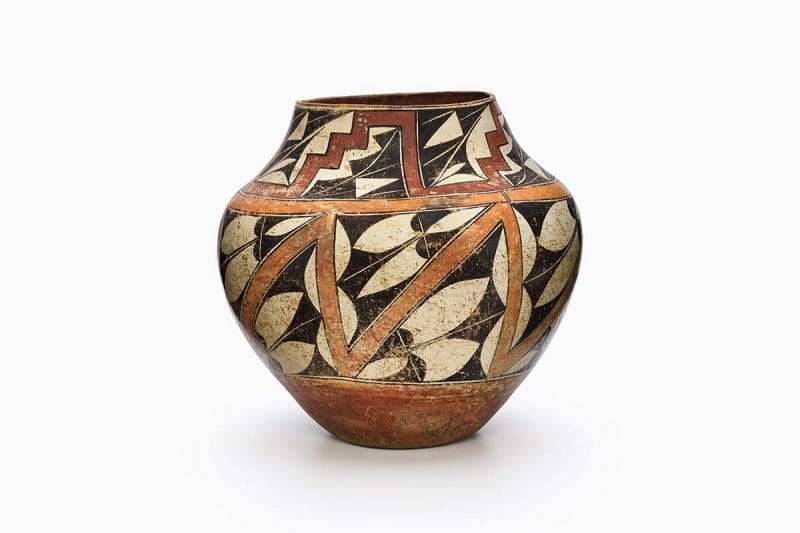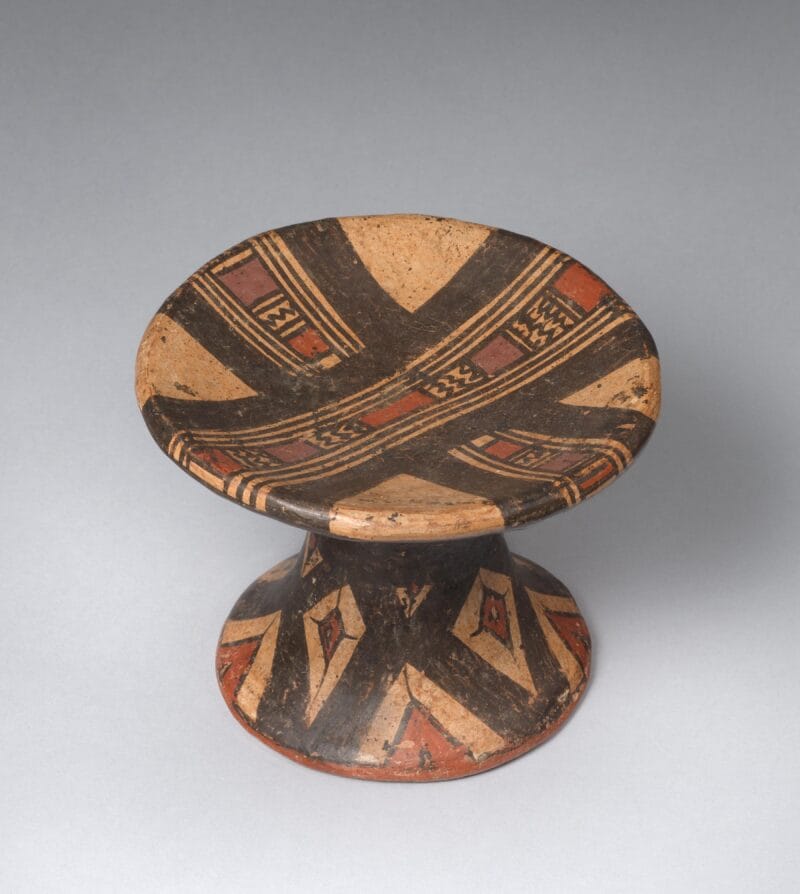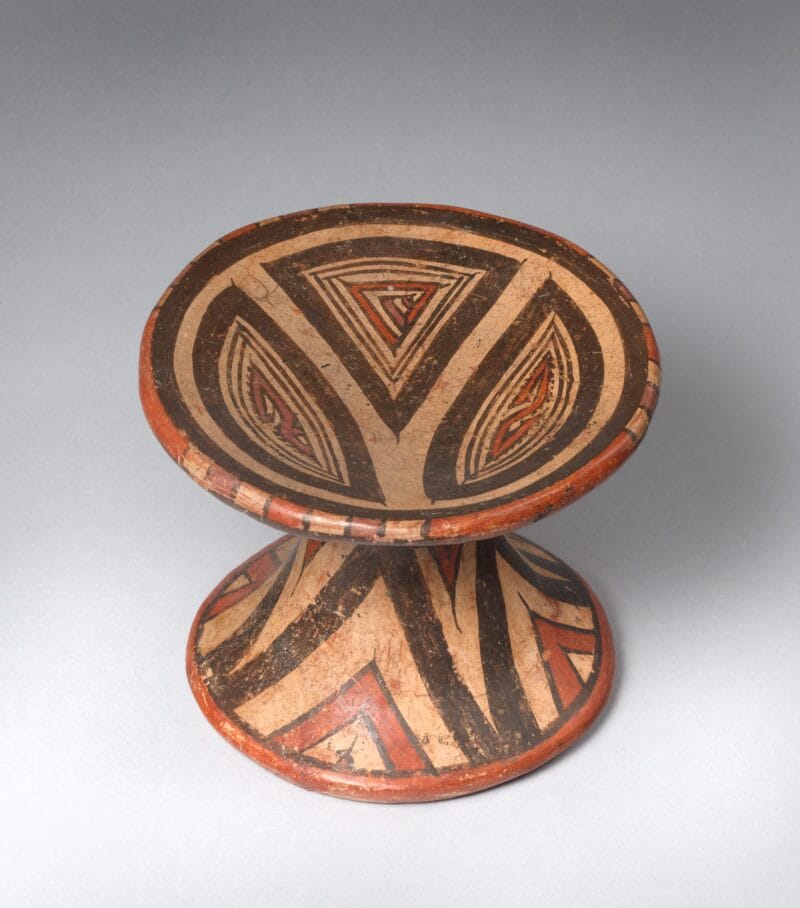
About the Object
Characteristic of the Cubitá and Conte de Azuero patterns (both traditions were derived from Gran Coclé), this piece displays polychromic geometric imagery that is enclosed by dark, thick bands of paint to create abstract forms. While these objects may have previously been associated with burials, the shape of the piece (a plate on a stem) resembles that of fruteras, which may have also held importance as common household items to contain and display fruits. Interestingly, this object bears remarkable resemblance to numerous objects found in the well-known archeological excavation at Sitio Conte.
Additional Information
The large number of articles found in the archeological site Sitio Conte in 1940 demonstrate that pre-colonial individuals formed relatively populous and complex societies in the Gran Coclé river region, in what is today Panama. Furthermore, these articles may suggest that these individuals traditionally adorned themselves and their funerary tombs with items bearing patterns of geometric, animal, and god/human-like images, though the exact nature of their use in the afterlife is still a matter of scholarly debate; they may have been mostly there to display wealth and power, or they were believed to make the journey with the deceased person into the afterlife.
Spencer Throckmorton Collection, New York, NY;
Gift to The Jan T. and Marica Vilcek Collection, 2009-2010;
Gift to The Vilcek Foundation, 2010;
Related Objects
You may also be interested in
“Grounded in Clay” on Display at the Saint Louis Art Museum
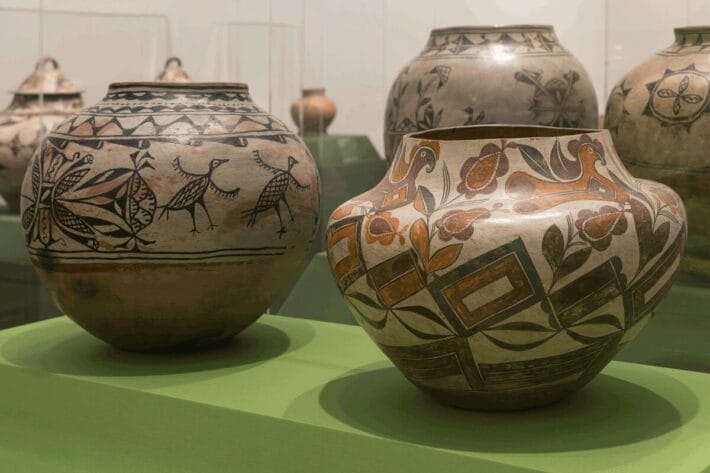
Grounded in Clay: Now on view at the Museum of Fine Arts, Houston
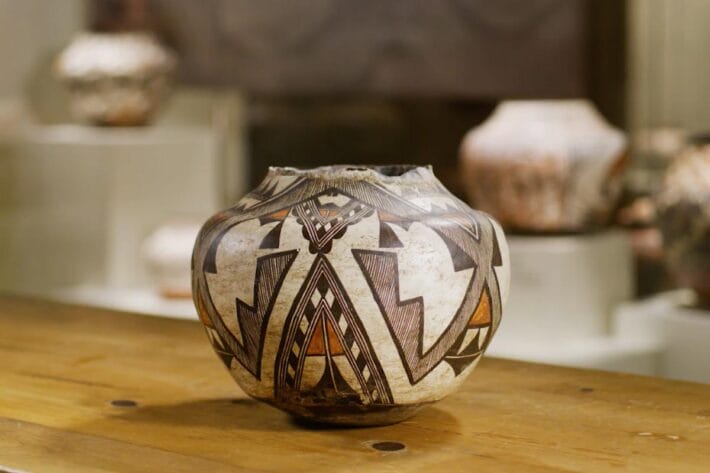
Vilcek Foundation supports “Grounded in Clay: The Spirit of Pueblo Pottery”
